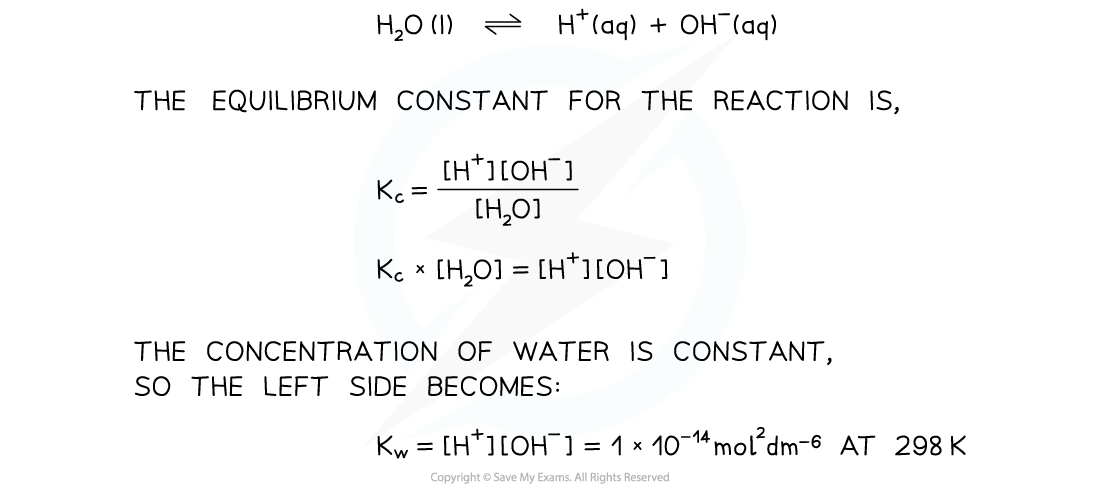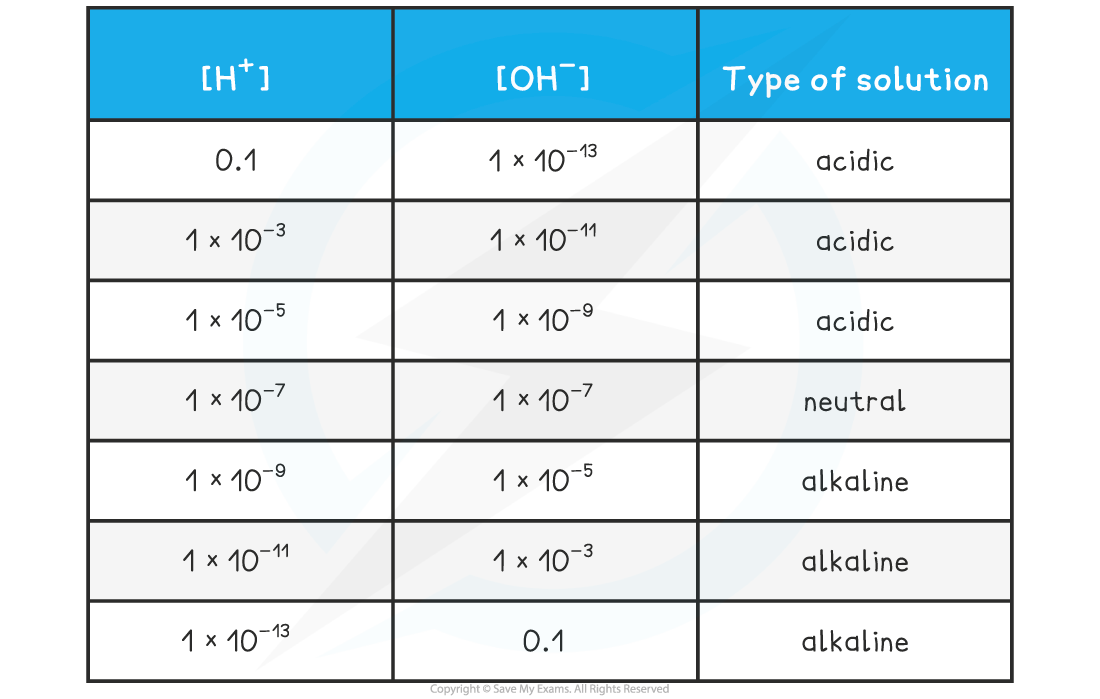- 翰林提供学术活动、国际课程、科研项目一站式留学背景提升服务!
- 400 888 0080
AQA A Level Chemistry复习笔记5.5.3 The Ionic Product of Water
The Ionic Product of Water
- In all aqueous solutions, an equilibrium exists in water where a few water molecules dissociate into protons and hydroxide ions
- We can derive an equilibrium constant for the reaction:

- This is a specific equilibrium constant called the ionic product for water
- The product of the two ion concentrations is always 1 x 10-14 mol2 dm-6
- This makes it straightforward to see the relationship between the two concentrations and the nature of the solution:
[H+] & [OH–] Table

pH of Strong Bases
Strong bases
- Strong bases are completely ionised in solution
BOH (aq) → B+ (aq) + OH- (aq)
- Therefore, the concentration of hydroxide ions [OH-] is equal to the concentration of base [BOH]
- Even strong alkalis have small amounts of H+ in solution which is due to the ionisation of water
- The concentration of OH- in solution can be used to calculate the pH using the ionic product of water
- Once the [H+] has been determined, the pH of the strong alkali can be founding using pH = -log[H+]

- Similarly, the ionic product of water can be used to find the concentration of OH- ions in solution if [H+] is known, simply by dividing Kw by the [H+
Worked Example
pH calculations of a strong alkaliQuestion 1: Calculate the pH of 0.15 mol dm-3 sodium hydroxide, NaOHQuestion 2: Calculate the hydroxide concentration of a solution of sodium hydroxide when the pH is 10.50
Answer
Sodium hydroxide is a strong base which ionises as follows:
NaOH (aq) → Na+ (aq) + OH- (aq)
Answer 1:
The pH of the solution is:
[H+] = Kw ÷ [OH-]
[H+] = (1 x 10-14) ÷ 0.15 = 6.66 x 10-14
pH = -log[H+]
= -log 6.66 x 10-14 = 13.17
Answer 2
Step 1: Calculate hydrogen concentration by rearranging the equation for pH
pH = -log[H+]
[H+]= 10-pH
[H+]= 10-10.50
[H+]= 3.16 x 10-11 mol dm-3
Step 2: Rearrange the ionic product of water to find the concentration of hydroxide ions
Kw = [H+] [OH-]
[OH-]= Kw ÷ [H+]
Step 3: Substitute the values into the expression to find the concentration of hydroxide ions
Since Kw is 1 x 10-14 mol2 dm-6,
[OH-]= (1 x 10-14)÷ (3.16 x 10-11)
[OH-]= 3.16 x 10-4 mol dm-3
Worked Example
What is the pH of a solution of hydroxide ions of concentration 1.0 × 10−3 mol dm−3 ?Kw = 1 × 10−14 mol2 dm-6
A. 3.00
B. 4.00
C. 10.00
D. 11.00
Answer
The correct option is D.
-
- Since Kw = [H+] [OH–], rearranging gives [H+] = Kw ÷ [OH–]
The concentration of [H+] is (1 × 10−14) ÷ (1.0 × 10−3) = 1.0 × 10−11 mol dm−3
[H+]= 10-pH
So the pH = 11.00
Exam Tip
Always give the pH to two decimal places.
转载自savemyexams

最新发布
© 2025. All Rights Reserved. 沪ICP备2023009024号-1









